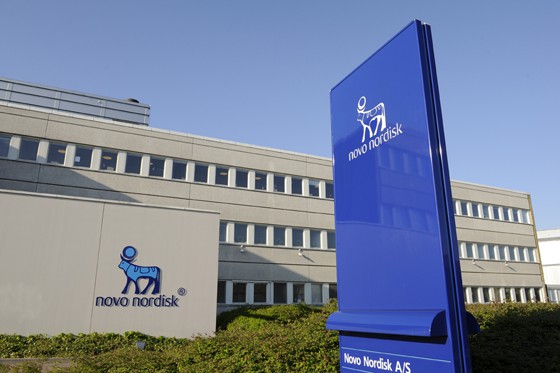
Novo Nordisk’s mix of two its leading diabetes products is on course to be a serious contender in the competitive type 2 diabetes market according to data presented at the meeting of the European Association for the Study of Diabetes (EASD) 2013.
IDegLira combines Novo’s insulin degludec Tresiba and GLP-1 agonist Victoza (liraglutide) into one pen-based therapy and the company has high hopes to offer a simpler means of treatment for people with type 2 diabetes.
Novo has already filed for approval of the drug in Europe, and results from the 26-week DUAL I study presented at EASD demonstrated the once-daily combination treatment’s effectiveness over its constituent parts in patients with type 2 diabetes unable to manage their condition with metformin with or without pioglitazone.
In the IDegLira arm, 81 per cent of patients treat with IDegLira were able to reach a target blood sugar level of HbA1c of less than 7.0, while 70 per cent reached HbA1c of less than 6.5.
For patients taking the long-acting insulin Tresiba, 65 per cent of participants achieved HbA1c of less than 7.0, while 48 per cent managed less than 6.5. In the arm taking Victoza – a drug that mimics a hormone to increase the amount of insulin released by the pancreas in response to food – 60 per cent had HbA1c of less than 6.0 and 41 per cent had HbA1c of less than 6.5.
IDegLira was also able to produce an impressive mean HbA1c reduction of 1.9 from a baseline of 8.3. This data demonstrated the drug’s superiority to Victoza and non-inferiority versus Tresiba in the reduction of blood sugar levels.
In addition, Novo posted positive data about the side effects associated with IDegLira in comparison to Victoza and Tresiba.
As an insulin, Tresiba is associated with weight gain and incidents of hypoglycaemia – a dangerous drop in blood sugar levels – in patients. However, Victoza, which simulates natural hormones in the gut, is associated with weight loss and fewer incidents of hypoglycaemia.
When combined, it seems that the positives of Victoza effectively balance out the negative effects associated with the insulin, as the IDegLira arm demonstrated a weight reduction of 0.5kg and a 32 per cent lower rate of hypoglycaemia versus Tresiba. As expected, Victoza had less hypoglycaemia and greater weight reduction than either of the other treatments.
According to Novo’s chief science officer Mads Krogsgaard Thomsen, the data puts IDegLira on course as a treatment option for type 2 diabetes patients unable to manage their condition on metformin and Victoza alone.
“In the future you can envision that patients take IDegLira when Victoza is no longer enough,” he told PMLiVE.
“The patient just changes the colour of the pen. Instead of getting Victoza, you get IDegLira, so in the same injection you will still get Victoza but you will have the addition of insulin degludec, making your treatment equally simple – you don’t need two pens like in the old days.”
The drug’s potential goes beyond fitting into this treatment line, according to Thomsen, and IDegLira even has prospects for type 2 diabetes patients who have failed on insulin therapy, due in part to its reduced risk of side effects.
“We have compared people failing on Tresiba to intensify them with either with a mealtime insulin such as NovoRapid or with Victoza as a GLP-1 agonist,” he said.
“And in these studies for IDegLira, we have shown that by intensifying treatment of patients who have failed on basal insulin with a GLP 1 agonist, the effect is actually superior both in terms of blood glucose control, in terms of weight loss and in terms of hypoglycaemia. Whereas if you intensify with a mealtime insulin you do see a significant increase in the events of hypoclgycaemia.”
There’s also the possibility the drug could replace Victoza as the first injectable treatment for type 2 diabetes patients who have very inadequate management of their HbA1c levels.
“Victoza does the job most often in patients who are moderately controlled, but it is not an insulin, it’s an analogue,” said Thomsen.
In terms of IDegLira’s regulatory situation, Thomsen confirmed that IDegLira is under review in Europe, with a decision due for early 2014.
Approval in the US could be trickier as Tresiba is yet to be recommended by the Food and Drug Administration (FDA), with Novo due to present cardiovascular safety data in two to three years time.




